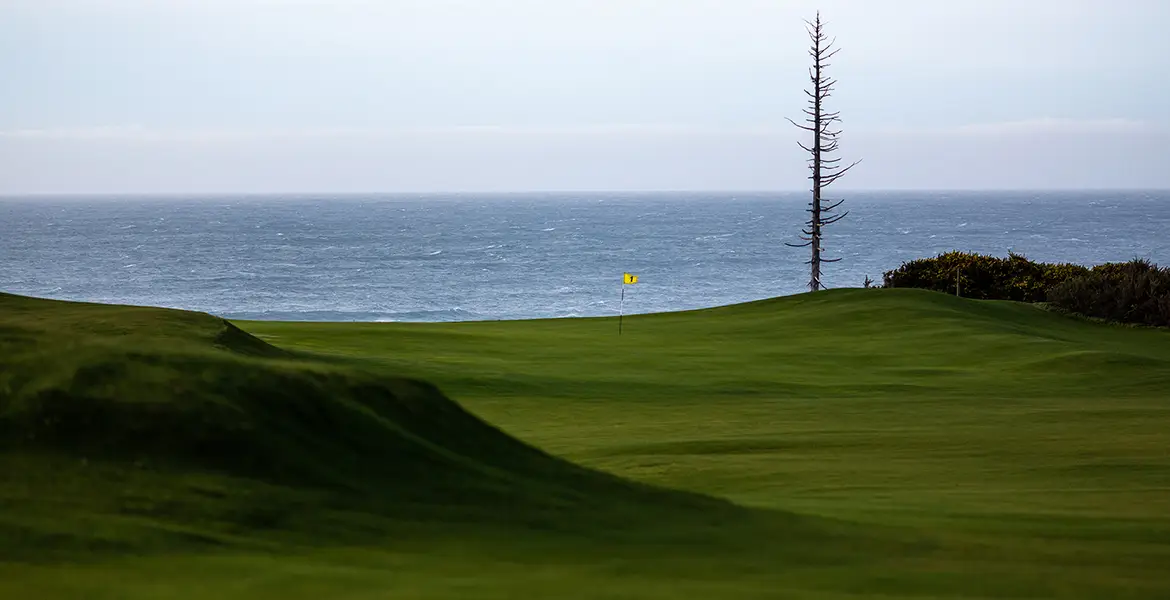For Jack Burke Jr., it is not enough for the Champions Golf Club merely to possess two of the Southwest’s most admired golf courses. For a club to be worth its salt, it first and foremost must succeed as a club. Members and employees alike must be totally committed to making every aspect of the club as good as it can possibly be. From the pro who’s giving a lesson to the assistant selling a sweater to the locker room bartender mixing a scotch and soda, he or she must possess dedication and zeal. Yet Burke demands exactly that from his members as well.
Champions isn’t a club where members fly in once or twice a year and barely interact with one another. Rather, it’s a club where the members take pride in their comradeship, their golf ability (275 men play to single-digit handicaps) and their passion for the spirit of the game (many members walk and carry their own bags, even in summer).
Champions was the brainchild of two of the finest professional golfers the game has produced, Burke and Jimmy Demaret. Burke waged an incredible campaign in 1956 when he won both the Masters and the PGA Championship, but already he was weary of life on the road, of driving endless miles and sleeping at anonymous motels. He wanted to find something to do that would be fulfilling, yet would keep him home more with his wife and children.
Burke hooked up with fellow Houston resident Demaret, a three-time Masters champion and one of the most popular golfers in history. Their shared was to bring a first-class, large-scale golf club to Houston.
Late in 1956, the duo purchased 500 acres of densely forested land some 20 miles north of downtown Houston. In those days, there was absolutely nothing within miles of the site, except for more oaks, more pines and more sweetgums. Yet somehow they knew the city would grow out to meet their 500-acre plot. They chose architect Ralph Plummer, but they left nothing to fate. They
hit countless shots in the dirt, from every potential tee box in every kind of wind to gain a full measure of the course’s playing value before it was even grassed. The course opened for play in 1959 and was an instant success.
Cypress Creek was named for a natural water feature which snakes through the property, notably affecting play at holes 4 and 13. Perhaps the most amazing design feature was its total absence of sand bunkers. Not one was in play on opening day.
Influential friends such as Ben Hogan and Dan Jenkins were early proponents of the course and club and in short order, Champions attracted the 1966 Houston stop on the PGA Tour, the 1967 Ryder Cup and the 1969 U.S. Open, won by Orville Moody.
Overall, the course is flat, and the most pronounced feature is the huge, gently rolling greens. Burke says, plain and simple, the course favors long hitters and good putters. Champions opens with a bang, throwing a pair of par 4s in the 450-yard range right off the bat.
The marquee hole on the front side is the par-3 4th, which can stretch to 230 yards and plays over and alongside a curvature of Cypress Creek. The back nine opens and closes with monstrously long par 4s, but in the middle is Champions’ version of Amen Corner, and it’s a dandy.
The club’s other course, the George Fazio-designed Jackrabbit, is considered by some as the tougher of the two. Nevertheless, Burke partner Demaret acknowledge that having a pair of outstanding courses and a superior practice facility was only part of the equation. What they set out to do was to create a club worthy of bearing the name “Champions.” They have succeeded admirably.
Cypress Creek Course
Par: 71
Yardage: 7,301
Year founded: 1958
Architect: Ralph Plummer
Jackrabbit Course
Par: 71
Yardage: 7,021
Year founded: 1964
Architect: George Fazio






